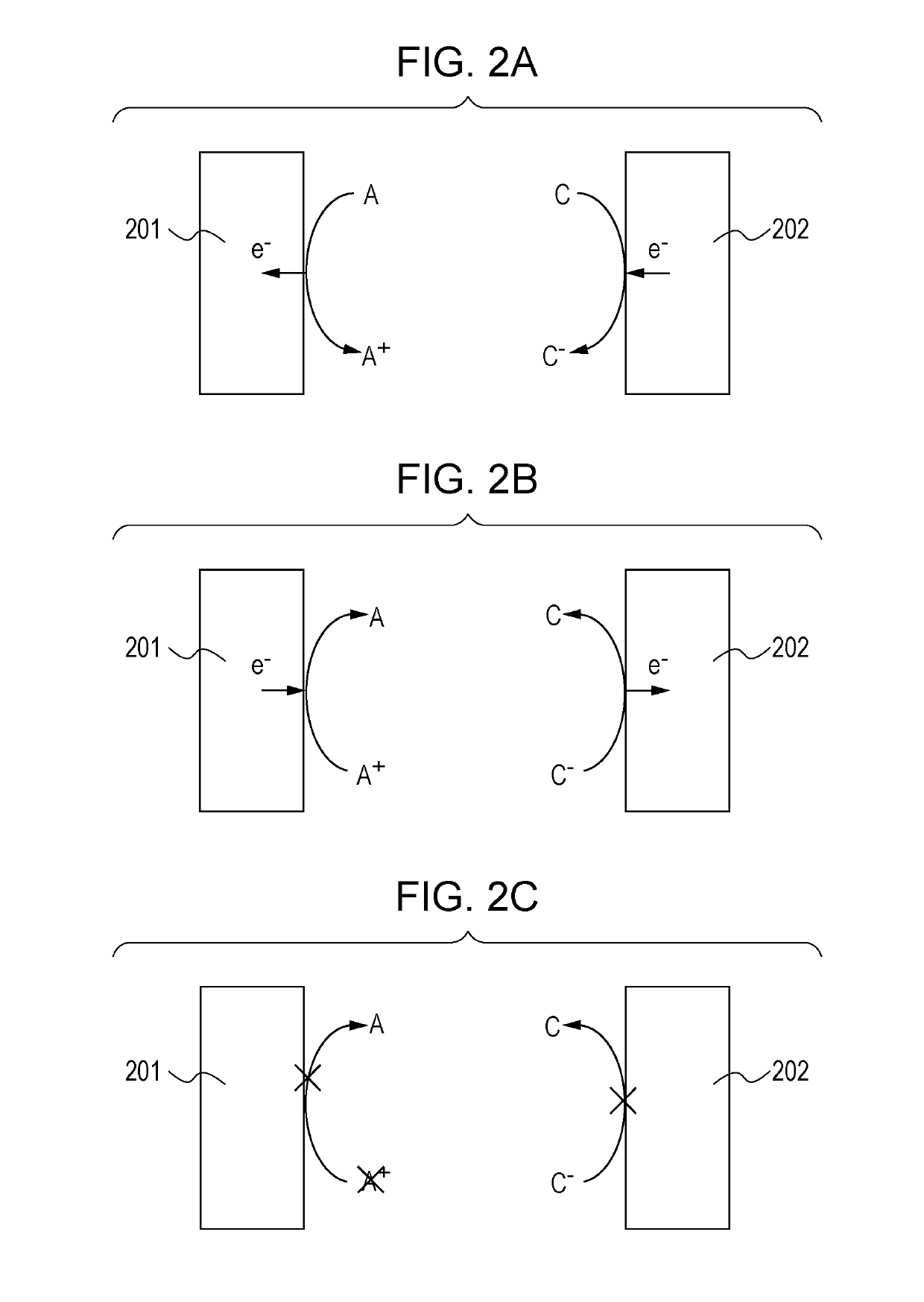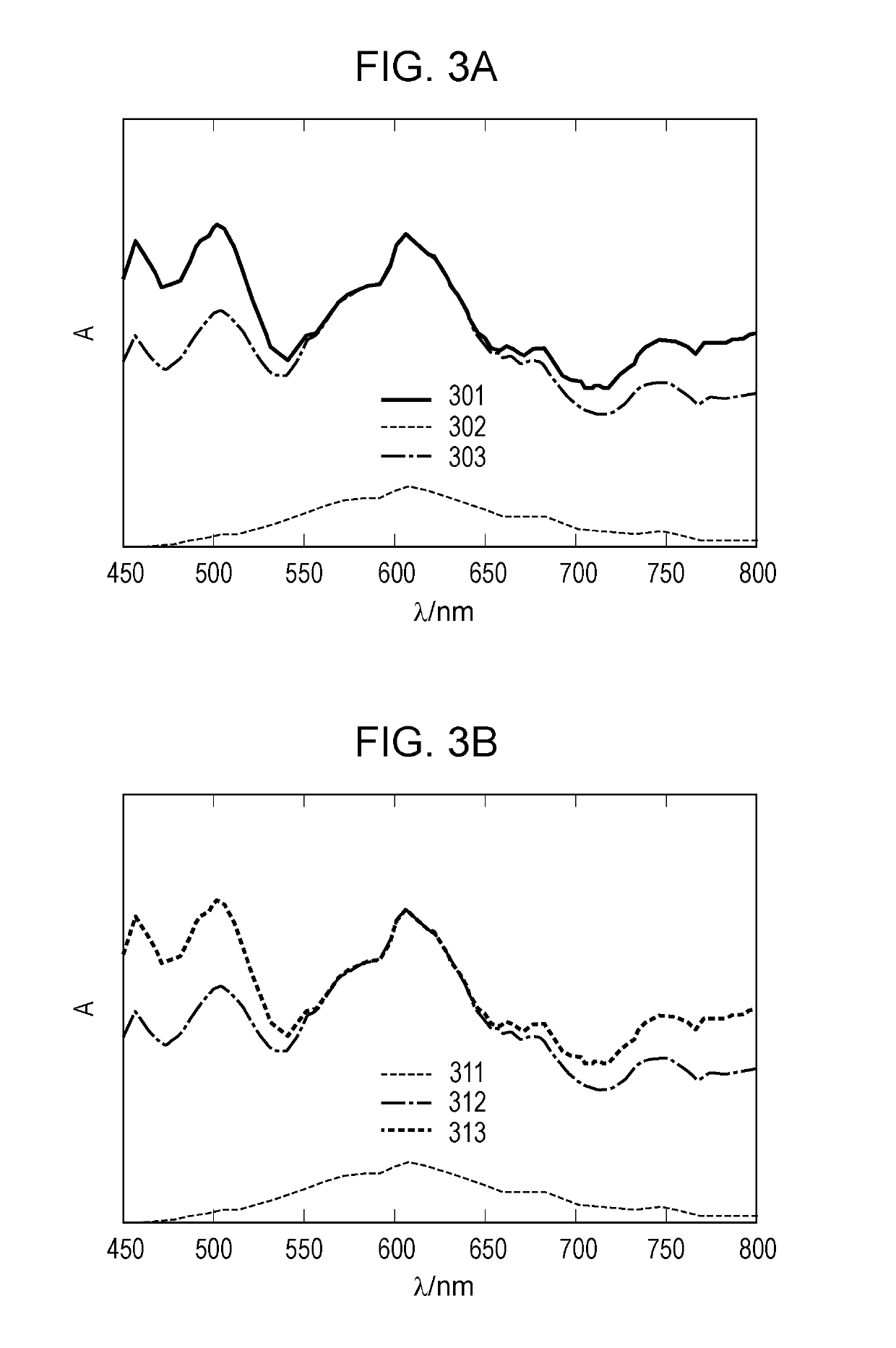Electrochromic device, optical filter, lens unit, imaging apparatus, window member, and driving method
a technology of optical filter and optical filter, which is applied in the direction of camera filters, instruments, constructions, etc., can solve the problems of affecting the balance of electron transfer, reducing the transparency of the ec device in a decolored state, and inhibiting the achievement of an absorption spectrum in a colored sta
- Summary
- Abstract
- Description
- Claims
- Application Information
AI Technical Summary
Benefits of technology
Problems solved by technology
Method used
Image
Examples
first embodiment
[0044]Configuration of EC Device
[0045]The configuration of an electrochromic (hereafter, “electrochromic” may be referred to as “EC”) device 500 according to this embodiment will be described. FIG. 5 schematically illustrates the configuration of an EC device 500. The EC device 500 according to this embodiment includes an EC element 100 and a driving unit 510.
[0046]The configuration of an EC device is not limited to the configuration according to this embodiment. It is sufficient that the EC device includes an EC element including at least a first electrode, a second electrode, and an EC layer disposed between the first electrode and the second electrode.
[0047]Structure of EC Element
[0048]The structure of the EC element 100 will be described with reference to FIGS. 1A and 1B. FIGS. 1A and 1B schematically illustrate the structure of the EC element 100.
[0049]The EC element 100 includes a pair of substrates 104, a first electrode 101 and a second electrode 102 disposed between the pai...
second embodiment
[0196]An EC element 700 according to this embodiment will be described with reference to FIGS. 7A and 7B. The EC element 700 is an EC element including third electrodes 730. FIG. 7A is a top view illustrating the structure of the EC element 700 and FIG. 7B is a sectional view illustrating the structure of the EC element 700.
[0197]The EC element 700 includes a first electrode 701, a second electrode 702, an EC layer 703, substrates 704, a sealing member 705, and third electrodes 730. The first electrode 701 and the second electrode 702 are disposed between the pair of substrates 704 so as to face each other. The EC layer 703 is disposed between the first electrode 701 and the second electrode 702. The sealing member 705 is disposed between the pair of substrates 704, and the pair of substrates 704 and the sealing member 705 constitute a cell. An opening 710 is formed in the cell and sealed with a sealant 720. The first electrode 701, the second electrode 702, the EC layer 703, the su...
third embodiment
[0206]The EC element according to this embodiment is the same as that in the first embodiment, except that an oxidation-reduction substance that satisfies the following conditions (a) to (c) or (d) to (f) is further contained in the EC layer 103 according to the first embodiment.
[0207]As described above, the oxidizable substance is a substance that satisfies the conditions (A) to (D) and irreversibly causes an electrochemical oxidation reaction. The reducible substance is a substance that satisfies the conditions (E) to (H) and irreversibly causes an electrochemical reduction reaction. In addition, the EC layer 103 according to this embodiment contains a plurality of oxidation-reduction substances that electrochemically cause reversible oxidation-reduction reactions. The plurality of oxidation-reduction substances are constituted by at least one EC compound and an oxidation-reduction substance that satisfies the following conditions (a) to (c) or (d) to (f). The EC layer 103 may fur...
PUM
| Property | Measurement | Unit |
|---|---|---|
| charge imbalance | aaaaa | aaaaa |
| electrochromic | aaaaa | aaaaa |
| anodic electrochromic | aaaaa | aaaaa |
Abstract
Description
Claims
Application Information
 Login to View More
Login to View More - R&D
- Intellectual Property
- Life Sciences
- Materials
- Tech Scout
- Unparalleled Data Quality
- Higher Quality Content
- 60% Fewer Hallucinations
Browse by: Latest US Patents, China's latest patents, Technical Efficacy Thesaurus, Application Domain, Technology Topic, Popular Technical Reports.
© 2025 PatSnap. All rights reserved.Legal|Privacy policy|Modern Slavery Act Transparency Statement|Sitemap|About US| Contact US: help@patsnap.com



